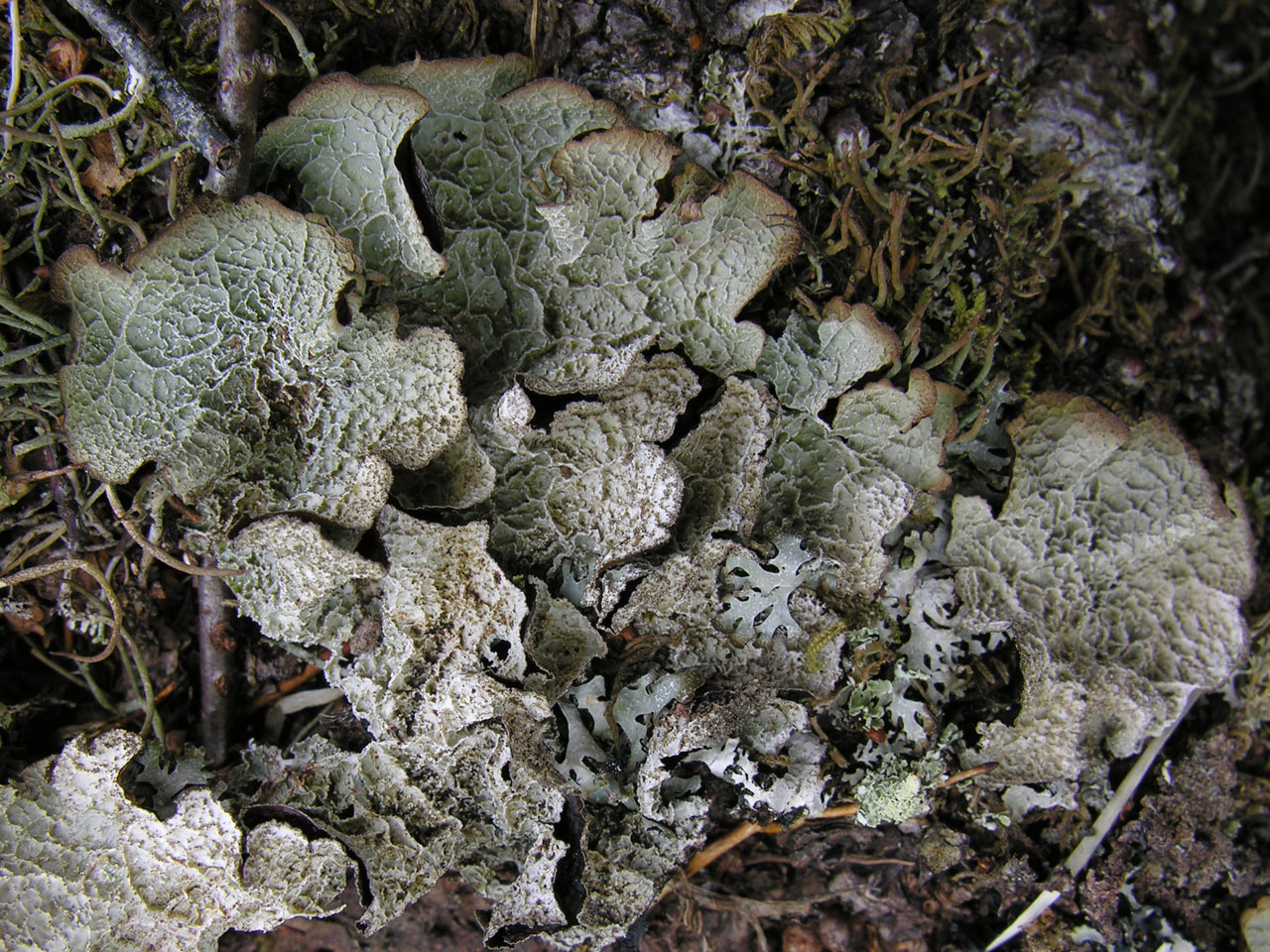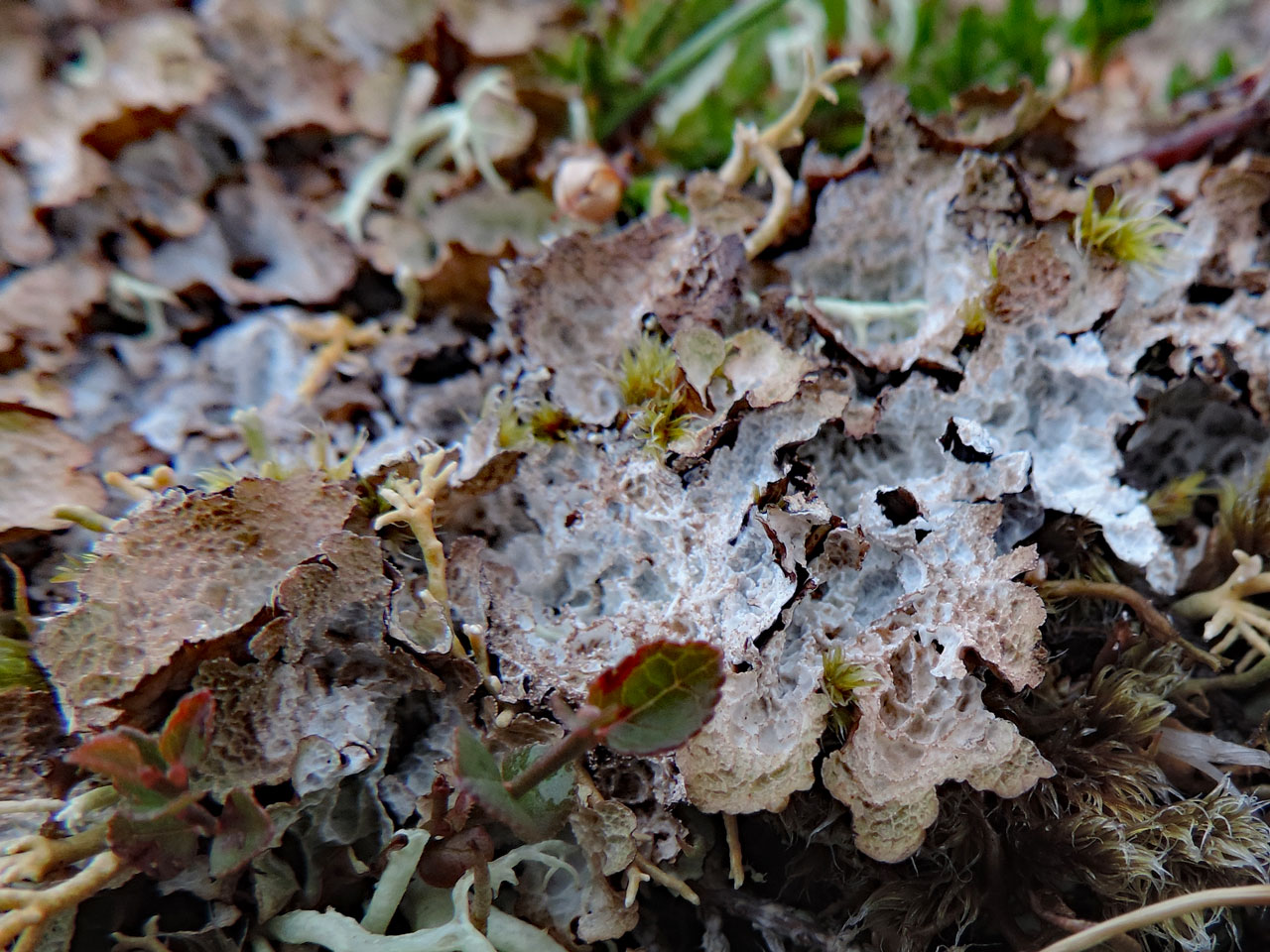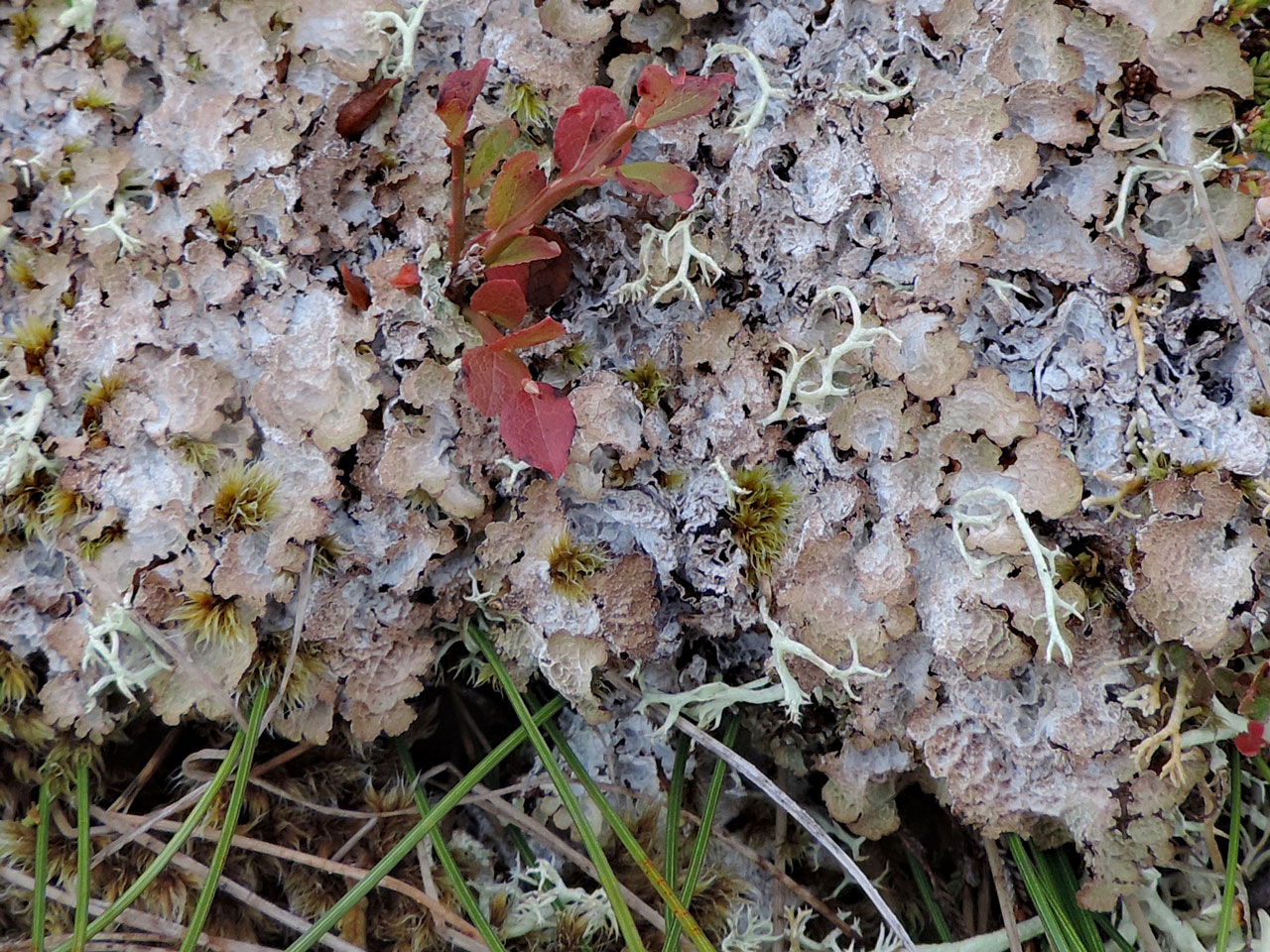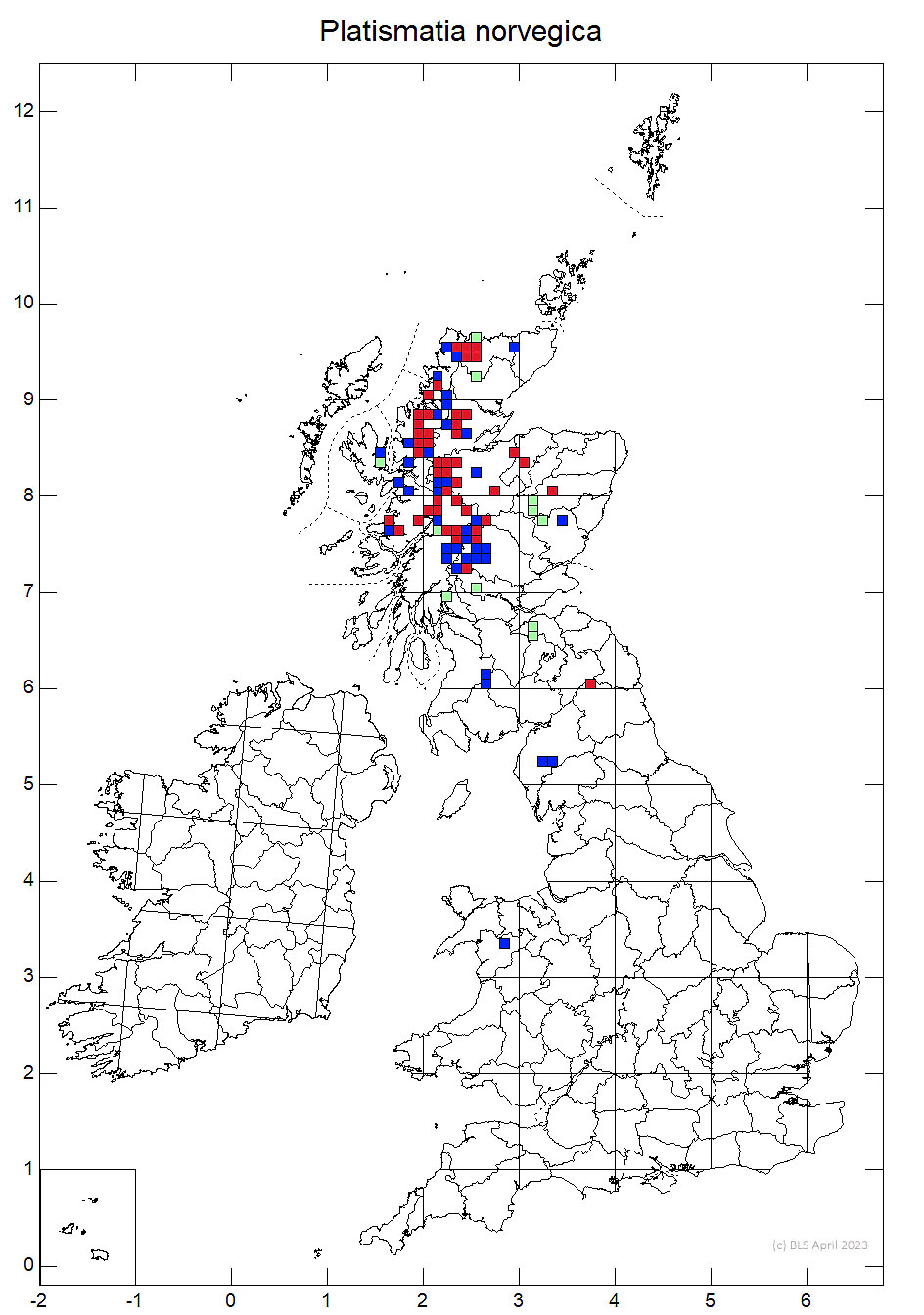A magnificent lichen, which once seen, is easily separated from the common and very variable Platismatia glauca by the combination of broader, more rounded lobes with a very pronounced network of low, sharp ridges. A special species of northern montane heaths, boulders and veteran trees in old growth boreal woodland.
Like Platismatia glauca, but with broader, more rounded lobes (to 2.5 cm broad), with rounded, sparingly indented margins; upper surface dull pale grey, not or sometimes tinged brownish, with a very pronounced network of low, sharp ridges with indistinct pseudocyphellae and simple or clustered isidia. Apothecia not seen.
Mainly in moss-lichen montane heaths, as well as on exposed, siliceous rocks but also on well-lit leached acidic bark, especially of Pinus, Betula, Salix and Quercus in relict old growth boreal forests

Local and rare. N. and N.W. Scotland (Highlands), England (Northumberland, Cumbria), N. Wales.
Very locally frequent in the north west of its range, but very rare to the south and not seen recently in the Southern Uplands of Scotland, Lake District or north Wales, with a single recent record south of the Highlands in Northumberland. Has probable been historically lost to the south from intensification of land use leading to the loss of montane heath and high altitude old growth woodlands.
Britain: Notable International Responsibility species
Wales: not assessed
Cannon, P., Divakar, P., Yahr, R., Aptroot, A., Clerc, P., Coppins, B., Fryday, A., Sanderson, N. & Simkin, J. (2023). Lecanorales: Parmeliaceae, including the genera Alectoria, Allantoparmelia, Arctoparmelia, Brodoa, Bryoria, Cetraria, Cetrariella, Cetrelia, Cornicularia, Evernia, Flavocetraria, Flavoparmelia, Hypogymnia, Hypotrachyna, Imshaugia, Melanelia, Melanelixia, Melanohalea, Menegazzia, Montanelia, Nesolechia, Parmelia, Parmelina, Parmeliopsis, Parmotrema, Platismatia, Pleurosticta, Protoparmelia, Pseudephebe, Pseudevernia, Punctelia, Raesaenenia, Tuckermannopsis, Usnea, Vulpicida and Xanthoparmelia. Revisions of British and Irish Lichens 33: 1-98.
Text by N A Sanderson, based on Cannon et al (2023).



